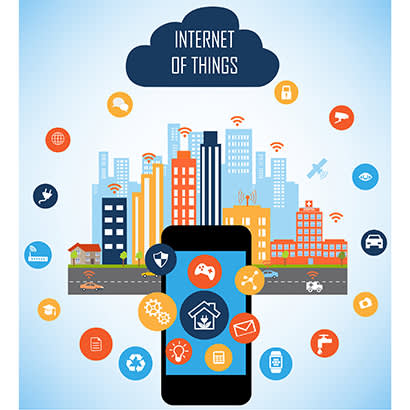
In an article on IoTforall.com, author Calum McClelland provides the following definition of “The Internet of Things” (IoT): [It] is about extending the power of the internet beyond computers and smartphones to a whole range of other things, processes and environments. Those ‘connected’ things are used to gather information, send information back, or both.” And, that ability to be connected — “to send and/or receive data,” he says, makes things “smart.”
Across many industries, including the lighting industry, this is a growing trend. Light emitting diode (LED) technology has been around for roughly 50 years, and as the quality of the light LEDs emit has improved and the cost has decreased, they are now ubiquitous in outdoor and indoor settings. The higher brightness, increased energy efficiency and longer life span of today’s LEDs is driving that growth, which, according to a report published by Zion Market Research that gives a global perspective for this industry, is “likely to cross $54.28 billion by end of 2022.”
In an October 2018 LEDs Magazine article by Martin Wittman, titled “The next wave in outdoor lighting is built on smart cities”, there are some interesting applications of the technology that are either already available or on the horizon. “We need to change the way customers see light,” Wittman says, “from light as mere utility to light as a smart solution that can add real value in a wide array of areas....technologies exist to make this happen. With proper application, these technologies will empower outdoor lighting to profoundly improve the way people live, work, and play.”
An example of this smart LED application can be seen in parking facilities, office buildings and even on city streets. In each case, the use of smart motion-sensing technology coupled with the ability to control illumination levels can not only reduce the amount of energy needed to provide safe light levels, especially during non-peak times, but can also lead to cost savings over the long term. LEDs connected to the internet could be controlled from a user’s device or programmed, for example, to track sunrise and sunset, turning on or off lights and providing the right level of lighting, automatically. A blog, titled “How IoT is changing the face of LED lighting”, posted on The Future of Things website, lists the following benefits of IoT in LED lighting:
- faster deployment
- reduction in maintenance cost
- enhancement of public safety
- conservation of energy
Wittman sees LED lighting being used in creative ways: “…it can provide helpful information and messaging to people in public spaces. How would this work? A street lighting fixture could project all sorts of messages, from an advertisement on the sidewalk to an accident alert on the road.” He goes on to say that sensors in street lights could help monitor carbon dioxide and air-quality levels.
As with any new technological advancement comes the need to be wary of those who look for ways to hack into and disrupt systems. However, the possibilities for the application of IoT-connected LED lights are promising.
Sonia Myrick is the Executive Editor for Parks & Recreation magazine.

